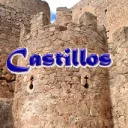• BUDAPEST (IV) Parlamento, Plaza de la Libertad, Café Central, Museo Nacional Húngaro, Museo de Artes Aplicadas y Plaza Vörösmarty tér.
 En nuestro cuarto día de estancia en Budapest no podía pasar sin visitar su Parlamento Nacional y algunos museos que habíamos previsto y seguiremos recorriendo el centro.
En nuestro cuarto día de estancia en Budapest no podía pasar sin visitar su Parlamento Nacional y algunos museos que habíamos previsto y seguiremos recorriendo el centro.
Encontraras las siguientes visitas:
- El Parlamento.– El parlamento es la sede de la Asamblea Nacional de Hungría, uno de los más antiguos edificios legislativos de Europa. Fue construido entre 1885 y 1902, el enorme edificio tiene nada menos que 268 metros de longitud y 110 metros de profundidad. En las visitas guiadas se puede ver los distintos salones y cámaras decoradas con mármoles, oro, pinturas, esculturas, etc.
- Plaza de la Libertad.- La plaza de La Libertad que además de ser un coqueto pulmón verde, se encuentran los edificios de gran valor arquitectónico en el contorno del mismo, el edificio de la televisión húngara, el lugar de los disturbios en el otoño de 2006. Y el monumento Memorial del Ejército de Rusia.
- Museo Nacional Húngaro.- Este museo está instalado en uno de los palacios más bonitos de estilo clásico de Hungría, además de poseer interesantes colecciones. Este museo fue fundado por el Conde Ferenc Széchényi, en 1802 y fue inaugurado en 1846, dispone de tres plantas. Una exposición permanente (de las siete que presenta el museo) aporta las diferentes épocas de la historia de Hungría desde la fundación del Estado hasta 1990.
- Museo de Artes Aplicadas.- Construido entre 1893 y 1896 en estilo modernista húngaro según diseño de por Ödön Lechner. Con una muestra de objetos de arte modernista y secesionista, además de los objetos de la cultura islámica, hindú y persa.
- Estación de Budapest-Kelet.– Su fachada fue diseñada por Gyula Rochlitz y el resto de la estación fue creada por los arquitectos: János Feketeházy y Mór Than, construida entre 1881 y 1884 en estilo ecléctico.
- Y ya de noche no nos queremos ir de Budapest sin tomar el vino caliente acompañado con una buena salchicha y nos vamos a Vörösmarty tér que en este espacio de la plaza están diferentes casetas con mesas y bancos donde degustar estos productos.
Puedes descargarte el PDF con información, planos, fotos y contactos.
Pulsar sobre la imagen con el botón derecho y guardar como…para descargar y llevar el archivo PDF en tu tablet o smartphone. Y si deseas conocer las nuevas publicaciones solo tienes incluirte en seguir.
-
BUDAPEST (IV) Parlament, Szabadság tér, Központi Kávézó, Magyar Nemzeti Múzeum, Iparművészeti Múzeum és a Vörösmarty tér.
A budapesti tartózkodás negyedik napján nem tudtam elhaladni anélkül, hogy meglátogattam volna a Nemzeti Parlamentet és néhány tervezett múzeumot, és folytatjuk a központ bejárását.
A következő látogatásokat fogja találni:
- Parlament. – A Parlament a Magyar Nemzetgyűlés székhelye, Európa egyik legrégebbi jogalkotási épülete. Az 1885 és 1902 között épült hatalmas épület legalább 268 méter hosszú és 110 méter mély. A vezetett túrákon megtekinthetik a különféle szobákat és kamrákat, amelyeket márvány, arany, festmények, szobrok stb. Díszítenek.
- Szabadság tér. – A Szabadság tér, amely amellett, hogy elbűvölő zöld tüdeje, nagy kontinentális építészeti értékű épületek, a magyar televízió épülete, az őszi zavargások helyszíne. 2006. És az orosz hadsereg emlékműve.
- Magyar Nemzeti Múzeum. – Ez a múzeum Magyarország egyik legszebb klasszikus stílusú palotájában található, és érdekes gyűjteményekkel rendelkezik. Ezt a múzeumot gróf Széchényi Ferenc alapította 1802-ben és 1846-ban avatták fel, három emeletes. Állandó kiállítás (a múzeum által bemutatott hétből) bemutatja a magyar történelem különböző korszakait az államalapítástól 1990-ig.
- Iparművészeti Múzeum. – 1893 és 1896 között épült magyar modernista stílusban, Lechner Ödön tervei alapján. Modernista és szecessziós művészeti tárgyak mintájával, valamint az iszlám, hindu és perzsa kultúrából származó tárgyakkal.
- Budapest-Kelet állomás. – Homlokzatát Rochlitz Gyula tervezte, az állomás többi részét pedig Feketeházy János és Than Mór építészek alkották, amelyeket 1881 és 1884 között építettek eklektikus stílusban.
- Éjszaka pedig nem akarunk elhagyni Budapestet anélkül, hogy forró bort fogyasztanánk egy jó kolbász kíséretében, és elmegyünk a Vörösmarty térre, amely a tér ezen terében különböző fülkék vannak asztalokkal és padokkal, ahol megkóstolhatjuk ezeket a termékeket.
Letöltheti az információkat, terveket, fotókat és névjegyeket tartalmazó PDF-fájlt.
A jobb gombbal kattintson a képre, és mentse másként … a PDF fájl letöltéséhez és tabletta vagy okostelefonra történő átviteléhez. És ha meg akarja ismerni az új kiadványokat, akkor csak be kell vonnia magát a követésbe.
-
BUDAPEST (IV) Parliament, Freedom Square, Central Café, Hungarian National Museum, Museum of Applied Arts and Vörösmarty tér.
On our fourth day of stay in Budapest, I could not pass without visiting its National Parliament and some museums that we had planned and we will continue touring the center.
You will find the following visits:
- Parliament.- Parliament is the seat of the Hungarian National Assembly, one of the oldest legislative buildings in Europe. Built between 1885 and 1902, the enormous building is no less than 268 meters long and 110 meters deep. In the guided tours you can see the different rooms and chambers decorated with marbles, gold, paintings, sculptures, etc.
- Freedom Square.- The Plaza de La Libertad, which in addition to being a charming green lung, are the buildings of great architectural value in the contour of it, the Hungarian television building, the place of the riots in the fall 2006. And the Russian Army Memorial monument.
- Hungarian National Museum.- This museum is located in one of the most beautiful classical-style palaces in Hungary, as well as having interesting collections. This museum was founded by Count Ferenc Széchényi in 1802 and was inaugurated in 1846, it has three floors. A permanent exhibition (of the seven that the museum presents) shows the different periods of Hungary’s history from the founding of the State to 1990.
- Museum of Applied Arts.- Built between 1893 and 1896 in the Hungarian modernist style according to a design by Ödön Lechner. With a sample of modernist and secessionist art objects, as well as objects from Islamic, Hindu and Persian culture.
- Budapest-Kelet Station.- Its façade was designed by Gyula Rochlitz and the rest of the station was created by the architects: János Feketeházy and Mór Than, built between 1881 and 1884 in an eclectic style.
- And at night we don’t want to leave Budapest without having hot wine accompanied by a good sausage and we go to Vörösmarty tér, which in this space of the square there are different booths with tables and benches where we can taste these products.
You can download the PDF with information, plans, photos and contacts.
Click on the image with the right button and save as … to download and take the PDF file on your tablet or smartphone. And if you want to know the new publications you just have to include yourself in following.
-
BUDAPEST (IV) Parlement, Place de la liberté, Café central, musée national hongrois, musée des arts appliqués et Vörösmarty tér.
Lors de notre quatrième jour de séjour à Budapest, je ne pourrais pas passer sans visiter son Parlement national et certains musées que nous avions prévus et nous continuerons à visiter le centre.
Vous trouverez les visites suivantes:
- Parlement.- Le Parlement est le siège de l’Assemblée nationale hongroise, l’un des plus anciens édifices législatifs d’Europe. Construit entre 1885 et 1902, l’énorme bâtiment ne mesure pas moins de 268 mètres de long et 110 mètres de profondeur. Dans les visites guidées, vous pouvez voir les différentes salles et chambres décorées de marbres, d’or, de peintures, de sculptures, etc.
- Place de la liberté.- La Place de la liberté, qui en plus d’être un charmant poumon vert, sont les bâtiments de grande valeur architecturale dans son contour, le bâtiment de la télévision hongroise, lieu des émeutes de l’automne 2006. Et le monument commémoratif de l’armée russe.
- Musée national hongrois. Ce musée est situé dans l’un des plus beaux palais de style classique de Hongrie, ainsi que des collections intéressantes. Ce musée a été fondé par le comte Ferenc Széchényi en 1802 et a été inauguré en 1846, il comporte trois étages. Une exposition permanente (des sept que le musée présente) montre les différentes périodes de l’histoire de la Hongrie depuis la fondation de l’État jusqu’à 1990.
- Musée des Arts Appliqués – Construit entre 1893 et 1896 dans le style moderniste hongrois d’après une conception d’Ödön Lechner. Avec un échantillon d’objets d’art modernistes et sécessionnistes, ainsi que des objets de la culture islamique, hindoue et persane.
- Gare de Budapest-Kelet.- Sa façade a été dessinée par Gyula Rochlitz et le reste de la gare a été réalisé par les architectes: János Feketeházy et Mór Than, construits entre 1881 et 1884 dans un style éclectique.
- Et la nuit nous ne voulons pas quitter Budapest sans avoir du vin chaud accompagné d’une bonne saucisse et nous allons à Vörösmarty tér, qui dans cet espace de la place il y a différents stands avec des tables et des bancs où l’on peut déguster ces produits.
Vous pouvez télécharger le PDF avec des informations, des plans, des photos et des contacts.
Cliquez sur l’image avec le bouton droit et enregistrez sous … pour télécharger et prendre le fichier PDF sur votre tablette ou smartphone. Et si vous voulez connaître les nouvelles publications, il vous suffit de vous inclure dans la suite.
-
BUDAPEST (IV) Parlament, Freiheitsplatz, Zentrales Café, Ungarisches Nationalmuseum, Museum für Angewandte Kunst und Vörösmarty tér.
An unserem vierten Aufenthaltstag in Budapest konnte ich nicht vorbeikommen, ohne das Nationalparlament und einige von uns geplante Museen zu besuchen, und wir werden das Zentrum weiter besichtigen.
Sie finden folgende Besuche:
- Parlament.– Das Parlament ist der Sitz der ungarischen Nationalversammlung, eines der ältesten gesetzgebenden Gebäude in Europa. Das riesige Gebäude wurde zwischen 1885 und 1902 erbaut und ist nicht weniger als 268 Meter lang und 110 Meter tief. In den Führungen können Sie die verschiedenen Räume und Kammern sehen, die mit Marmor, Gold, Gemälden, Skulpturen usw. dekoriert sind.
- Freiheitsplatz. – Die Freiheitsplatz, die nicht nur eine charmante grüne Lunge ist, sondern auch Gebäude von großem architektonischen Wert in ihrer Kontur ist, das ungarische Fernsehgebäude, der Ort der Unruhen im Herbst 2006. Und das Denkmal der russischen Armee.
- Ungarisches Nationalmuseum. – Dieses Museum befindet sich in einem der schönsten Paläste im klassischen Stil in Ungarn und verfügt über interessante Sammlungen. Dieses Museum wurde 1802 vom Grafen Ferenc Széchényi gegründet und 1846 eingeweiht. Es hat drei Stockwerke. Eine Dauerausstellung (von den sieben, die das Museum präsentiert) zeigt die verschiedenen Perioden der ungarischen Geschichte von der Staatsgründung bis 1990.
- Museum für Angewandte Kunst. – Erbaut zwischen 1893 und 1896 im ungarischen modernistischen Stil nach einem Entwurf von Ödön Lechner. Mit einer Auswahl modernistischer und sezessionistischer Kunstobjekte sowie Objekten aus der islamischen, hinduistischen und persischen Kultur.
- Station Budapest-Kelet. – Die Fassade wurde von Gyula Rochlitz entworfen und der Rest der Station wurde von den Architekten János Feketeházy und Mór Than entworfen, die zwischen 1881 und 1884 in einem vielseitigen Stil erbaut wurden.
- Und nachts wollen wir Budapest nicht verlassen, ohne heißen Wein mit einer guten Wurst zu haben, und wir gehen zum Vörösmarty tér, wo es auf diesem Platz verschiedene Stände mit Tischen und Bänken gibt, an denen wir diese Produkte probieren können.
Sie können das PDF mit Informationen, Plänen, Fotos und Kontakten herunterladen.
Klicken Sie mit der rechten Maustaste auf das Bild und speichern Sie es unter …, um die PDF-Datei herunterzuladen und auf Ihr Tablet oder Smartphone zu übertragen. Und wenn Sie die neuen Veröffentlichungen kennenlernen möchten, müssen Sie sich nur in die folgenden einbeziehen.

 castillode.wordpress.com
castillode.wordpress.com museode.wordpress.com
museode.wordpress.com